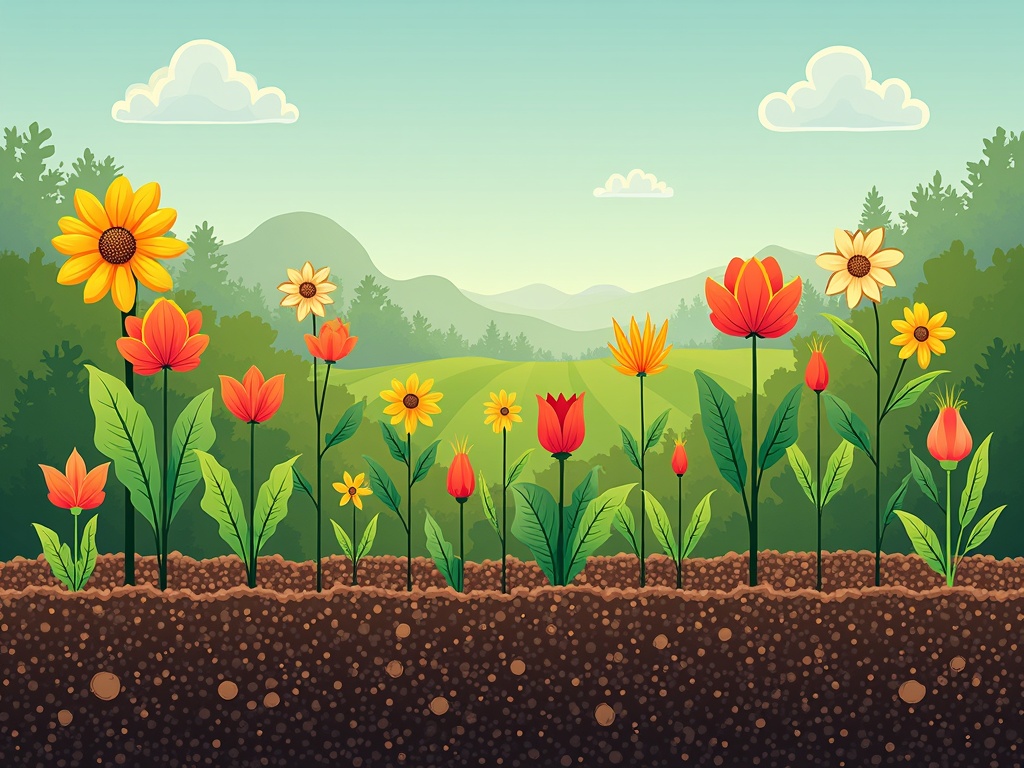How to Know When Compost Is Ready: A Comprehensive Guide
That rich, earthy smell… it’s the siren song of a successful compost pile! But how do you know when your black gold is actually ready to nourish your garden? Turning kitchen scraps and yard waste into valuable compost is an incredibly rewarding process, but patience is key. Harvesting too early can deprive your plants of essential nutrients, while waiting too long might diminish the compost’s potency. Let’s delve into the secrets of perfectly finished compost, ensuring your garden thrives.
The Compost Transformation: A Step-by-Step Breakdown
Before we dive into the how do you know part, let’s quickly recap what happens during composting. This biological ballet, orchestrated by billions of microorganisms, unfolds in distinct stages:
1. The Mesophilic Stage: The Initial Feast
This is the party-starting phase! Mesophilic microbes (those that thrive in moderate temperatures) jump into action, breaking down readily available sugars and carbohydrates. You’ll notice a rapid temperature increase in your pile.
2. The Thermophilic Stage: The Heat is On!
As temperatures climb (ideally between 130°F and 160°F), thermophilic microbes take over. These heat-loving organisms are powerhouses, rapidly decomposing complex materials like proteins and fats. This stage is critical for killing weed seeds and pathogens.
3. The Cooling (Mesophilic) Stage: Slowing Down
Once the easily digestible materials are consumed, the pile begins to cool down. Mesophilic microbes return, continuing to break down tougher materials like cellulose and lignin.
4. The Curing Stage: Maturation and Stabilization
This final stage is where the magic truly happens. Decomposition slows dramatically as the compost stabilizes. Humic substances form, which are essential for soil structure and nutrient retention. This is where patience pays off – properly cured compost is far superior to unfinished material.
Key Indicators: How to Tell When Compost is Ready
Alright, let’s get to the heart of the matter. Here’s a checklist of telltale signs that your compost is ready to unleash its goodness on your garden:
1. The Look Test: Visual Cues
Uniformity is Key: Finished compost should have a dark brown, almost black, color and a crumbly texture. You shouldn’t be able to easily identify the original ingredients (like vegetable peels or leaves). Small, partially decomposed twigs are okay, but large chunks indicate unfinished compost.
2. The Smell Test: The Earthy Aroma
A Sweet, Earthy Scent: Ready compost should smell like rich forest soil. A foul odor (like ammonia or rotten eggs) indicates anaerobic conditions, meaning the pile lacks sufficient oxygen and hasn’t fully decomposed. If you detect foul odors, turn the pile to aerate it.
3. The Temperature Test: Cool as a Cucumber (Almost)
Ambient Temperature: The internal temperature of the compost pile should be close to the ambient air temperature. If it’s still generating significant heat, the decomposition process is ongoing.
4. The Shrinkage Test: Volume Reduction
Significant Reduction: Expect a considerable reduction in volume from the original size of your compost pile. As materials decompose, they shrink. This isn’t a precise measurement, but a noticeable decrease in size is a encouraging sign.
5. The Plant Test: The Ultimate Proof
Cress Seed Test: This is a simple and effective way to assess compost maturity. Fill a small container with your compost and sow some cress seeds (or radish seeds, which germinate quickly). If the seeds germinate readily and the seedlings grow vigorously, your compost is ready to go! If germination is poor or the seedlings are stunted or yellowed, the compost is likely still immature and may contain phytotoxins (compounds that inhibit plant growth).
6. The Bag Test: A Simple Hands-On Assessment
The Squeeze Test: Grab a handful of compost and squeeze it. It should feel moist and spongy, not wet and soggy. When you open your hand, the compost should hold its shape loosely without dripping. If it’s too wet, it needs more air and potentially more brown materials. If it’s bone dry, it needs moisture.
Troubleshooting: What If Your Compost Isn’t Ready?
Sometimes, despite our best efforts, the composting process stalls or the end product isn’t quite right. Here’s how to troubleshoot common compost problems:
Problem: Foul Odors (Ammonia, Rotten Eggs)
Cause: Anaerobic conditions (lack of oxygen).
Solution: Turn the pile frequently to aerate it. Add more brown materials (like shredded leaves or paper) to improve airflow and absorb excess moisture.
Problem: Compost is Too Wet
Cause: Excessive moisture, often due to too many green materials or inadequate drainage.
Solution: Add more brown materials to absorb moisture. Turn the pile to aerate it and promote evaporation. Consider covering the pile to protect it from rain.
Problem: Compost is Too Dry
Cause: Insufficient moisture.
Solution: Water the pile regularly, aiming for the consistency of a wrung-out sponge. Ensure the pile is adequately shaded to prevent excessive evaporation.
Problem: Slow Decomposition
Cause: Insufficient nitrogen, lack of aeration, or temperatures that are too low.
Solution: Add more green materials (like grass clippings or kitchen scraps) to boost nitrogen levels. Turn the pile frequently to aerate it. Ensure the pile is large enough to generate sufficient heat (a minimum of 3x3x3 feet is generally recommended).
Problem: Still Recognizable Ingredients
Cause: Incomplete decomposition, often due to insufficient time, inadequate turning, or a lack of microbial activity.
Solution: Continue composting! Turn the pile regularly, ensuring adequate moisture and aeration. Chop up large pieces of organic matter into smaller pieces to accelerate decomposition.
Optimizing Your Compost: A Few Extra Tips
Want to become a compost master? Here are some advanced tips to elevate your composting game:
- Maintain the Right Carbon-to-Nitrogen Ratio: Aim for a ratio of around 25:1 to 30:1 (browns to greens).
- Chop Materials into Smaller Pieces: Smaller pieces decompose much faster. A chipper/shredder can be a valuable tool.
- Turn Regularly: Turning aerates the pile, distributes moisture, and promotes even decomposition. Aim to turn every few days during the active composting phase.
- Use a Compost Thermometer: Monitoring the temperature of your pile can help you optimize the composting process.
- Consider Adding a Compost Activator: Compost activators contain beneficial microbes that can jumpstart the decomposition process.
Using Your Finished Compost: The Garden’s Reward
Congratulations! You’ve created a nutrient-rich soil amendment that will transform your garden. Here are some ways to use your finished compost:
- Soil Amendment: Mix compost into garden beds before planting to improve soil structure, drainage, and fertility.
- Top Dressing: Spread a thin layer of compost around existing plants to provide a slow-release source of nutrients.
- Potting Mix Ingredient: Add compost to your potting mix to improve its water-holding capacity and nutrient content.
- Compost Tea: Brew compost tea to create a liquid fertilizer that can be used to foliar feed plants or water the soil.
The Bottom Line: Patience and Observation
Knowing when your compost is ready is a combination of science and art. While the guidelines above provide a solid framework, ultimately, experience and careful observation are key. Don’t be afraid to experiment and learn from your successes (and occasional setbacks!). With a little practice, you’ll become a compost connoisseur, creating a thriving garden and reducing your environmental impact in the process.

